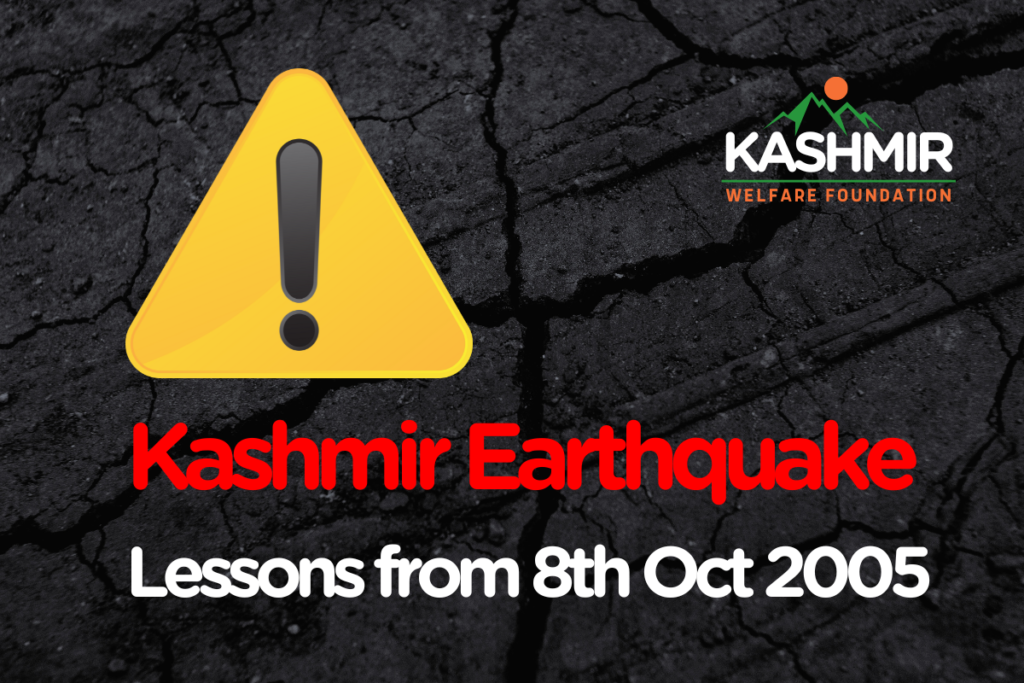
On 8th October 2005, life changed forever for millions in Kashmir, Pakistan, and surrounding areas. A 7.6 magnitude earthquake struck with terrifying force, reducing entire cities to rubble, taking nearly 100,000 lives, and leaving 3.5 million people homeless. Schools, homes, hospitals—everything collapsed in an instant.
For those who survived, the scars—both physical and emotional—remain. But so do the lessons.
The question is: Are we better prepared today?
Understanding Earthquakes: The Science Behind the Shaking
An earthquake occurs when stress builds up between tectonic plates beneath the Earth’s surface. When this stress is released, seismic waves travel outward, shaking the ground and anything in its path.
The strength of an earthquake is measured on the Richter scale, while the intensity (how much damage it causes) is recorded using the Modified Mercalli Scale.
Some earthquakes cause mild tremors, but others—like the one in Kashmir—unleash devastation in seconds.
The Fault Lines Impacting Kashmir
Kashmir is located in one of the world’s most seismically active regions, near the collision zone of the Indian and Eurasian tectonic plates. The Himalayan region, including Pakistan, India, Nepal, and Afghanistan, is highly vulnerable due to several fault lines, including:
- Main Boundary Thrust (MBT)
- Main Central Thrust (MCT)
- Jhelum Fault (near Muzaffarabad, heavily impacted in 2005)
These faults make Kashmir prone to major earthquakes, and scientists warn that another massive one could strike in the future.
Are Earthquakes Predictable?
Despite all our advancements in science, earthquakes remain largely unpredictable.
Scientists use seismic monitoring, historical data, and GPS tracking to identify high-risk areas, but they cannot predict the exact time, location, or magnitude of the next earthquake.
However, what we can do is prepare.
Lessons from 2005: How to Be Prepared for Earthquakes
Earthquake-Resistant Schools & Buildings
One of the biggest tragedies of the 2005 earthquake was that thousands of children died in schools because buildings were poorly constructed.
How do we prevent this?
Build earthquake-resistant structures using flexible materials and reinforced foundations. Retrofitting old buildings can strengthen them against future quakes. Ensure schools have emergency exits and clear evacuation routes. After the 2015 Nepal earthquake, schools were rebuilt with shock-absorbing foundations and lightweight materials, preventing future collapses.
Earthquake Preparedness in Schools & Homes
Schools should:



Homes should:



Example: After the Japan 2011 earthquake, schools implemented advanced earthquake alert systems, allowing students to take cover before tremors intensified.
Community Awareness & Early Warning Systems
Governments should invest in seismometers and early warning systems to detect earthquakes faster. Public awareness campaigns should educate people on earthquake safety measures. Rural communities should be provided with earthquake-resistant housing options.
Example: Mexico’s early warning system detects quakes before shaking begins, giving people time to evacuate.
Emergency Response & Relief Efforts
Governments must have a disaster response plan ready to mobilise within hours. Organisations like Kashmir Welfare Foundation and rescue teams should have pre-stocked relief supplies for affected areas. This will allows teams to be deployed to asssit with relief efforts as soon as possible. Communities should be trained in basic first aid and rescue operations.
Example: After the Turkey-Syria earthquake in 2023, quick response efforts saved thousands within the first 72 hours, the most critical period for survival.
The Earth Will Shake Again—Will We Be Ready?
The 2005 Kashmir earthquake was a wake-up call. But have we learned enough? Experts warn that another major earthquake could strike Kashmir, Pakistan, or India in the coming decade. The question is not if—but when.
The responsibility is on governments, schools, communities, and individuals to take action now, before it’s too late. We can’t stop earthquakes. But we can be prepared. Let’s honor the lives lost in 2005 by ensuring that next time, fewer lives are lost, and more are saved.
What Can You Do Today?




We are sounding the alarm bells today to ensure that our Kashmir can be more resilliant to natural diasasters, because they are inevitable. Disasters don’t wait. Neither should we.
 Quick Donate
Quick Donate  Latest Updates
Latest Updates Contact Us
Contact Us

